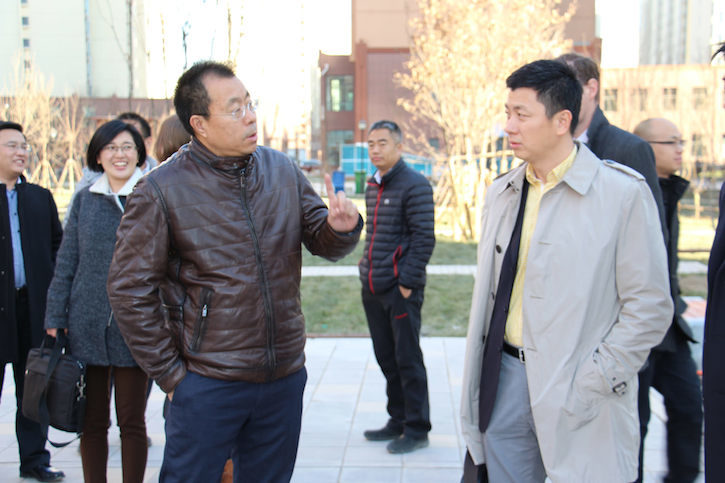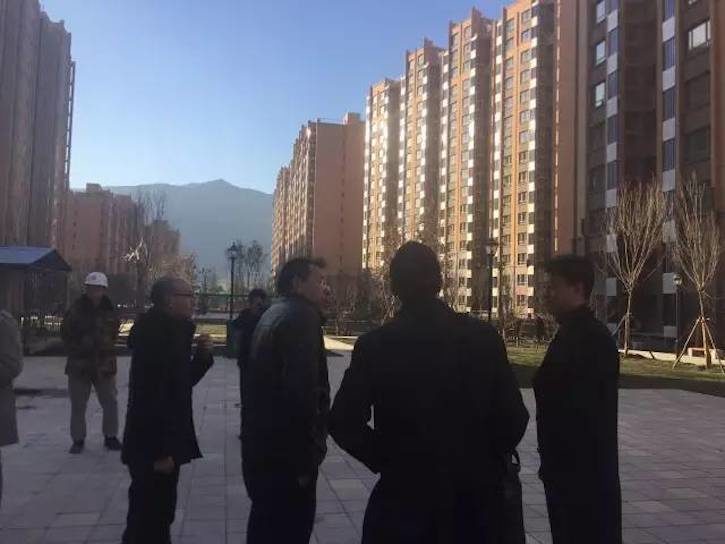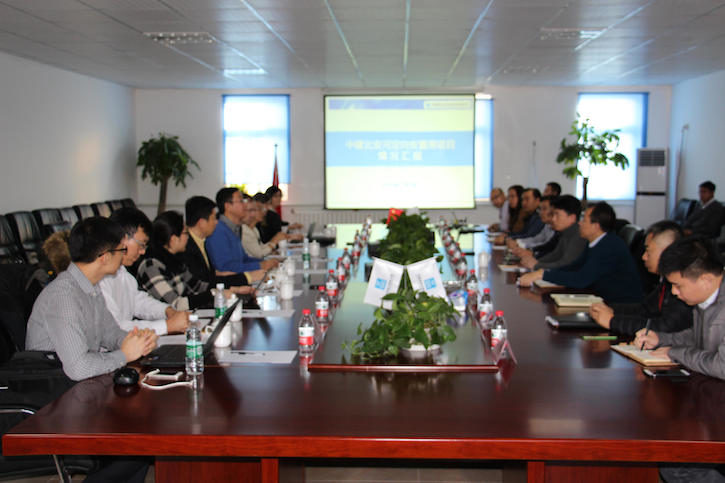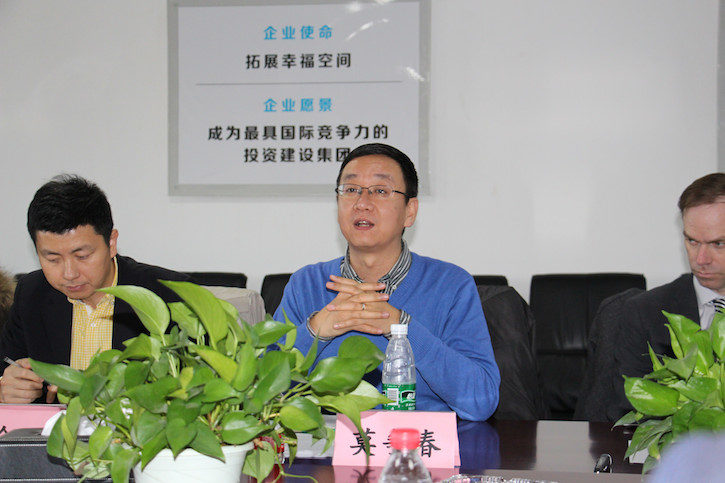
By Kevin Mo
On a recent day in the outskirts of Beijing, executives from China State Construction Engineering Corporation (CSCEC) met with counterparts from People’s Insurance Company of China (PICC) to discuss collaboration for scaling green buildings in China, convened by the Paulson Institute. CSCEC is the world’s No.1 construction company. PICC is ranked No.1 in Asia and No.3 in the world in property and liability insurance. Both are leading state-owned enterprises.
The two giants met at a construction site very fitting to the meeting agenda: China’s largest green affordable housing site, the Bei’anhe New Urbanization Zone. Some 20,000 people recently moved in, relocated after a renewable power plant was constructed in their former community. The 1.22 million square meters of new residential buildings all achieved the two-star green building requirements, one level above the national mandate, and met the energy standard of 75% energy savings. This huge green building project reflects CSCES’s commitment to lead the building industry in green building development.

Greening the building industry, which accounts for nearly half of China’s carbon emissions, is crucial to China’s transition to a sustainable economic growth model. China adopted its first national green building evaluation standard in 2006 and launched a national green building program in 2008. In 2012, the Ministry of Finance and Ministry of Housing and Urban-Rural Development jointly announced an incentive policy on green building development. In 2013, the government adopted a national green building action plan.
But the long promised national incentive program has never been implemented, one key reason that China achieved only half of its green building goal—one billion square meters of green buildings specified in the 12th Five Year Plan. One of the major reasons for the failure to implement the incentive program, as the Paulson Institute analyzed in a recent report, is that both the Ministry of Finance and the Ministry of Housing and Urban Development were worried that buildings receiving incentives would not deliver promised green performance.
The problem is that buildings certified as green based on blueprints often don’t deliver actual green performance. This problem exists in all green building programs around the world, including the famous LEED program developed by the U.S. Green Building Council. China has implemented two certifications for green buildings, for both the design stage on blueprints and the operational stage on actual performance. But more than 90% of certified green buildings only apply for the design stage green certification because it is easier to achieve and can be manipulated by green building evaluators, who are paid by and accountable to developers. Due to lack of capacity in supervision, officials worry that national incentives could lead to scandals—just as scandals plagued China’s electric vehicle incentive program.
Lack of trust in green building certification leads to serious market consequences. Average Chinese homebuyers are generally skeptical of and thus indifferent to a building’s advertised green features and unwilling to pay a premium on green benefits, making it hard for developers to recoup the incremental investment in green features. Concerned with the investment return, investors are very cautious about financing green buildings at scale. The Ministry of Finance will not implement the incentive program, which is highly anticipated by the market as the only source so far to cover the incremental costs of green buildings.
How to break this cycle? In October 2016, the Paulson Institute and PICC convened a group of national green building policymakers, standard-setting institutes, green building evaluation services firms, and building energy experts to discuss an idea introduced in a recent Paulson Institute report: a green insurance mechanism that helps insurance and independent evaluation institutions provide credit enhancement for green buildings. The Paulson Institute reached out to CSCEC and brought the two leading companies in their respective sectors together to discuss this innovative mechanism.

The idea is that, with this mechanism, insurance companies provide an insurance policy for developers, guaranteeing the green performance of a building to buyers. If the building fails to perform (saving energy), insurance companies have to pay the buyers the lost green benefits. With guaranteed green performance, buyers would be willing to pay premium for green features, such as lower energy bills (due to energy efficiency), lower water bills (due to water efficiency), and less PM2.5, formaldehyde, CO, mold, etc. (due to better indoor environment).
Extra savings thanks to green performance means the green building owners are less likely to default, which allows banks to offer preferential mortgage rates. Because the banking regulatory authority requires that financial institutes prioritize green development, banks should he happy to offer concessional rates to construction loans for projects with green building insurance policies. With insured green performance, the Ministry of Finance can unlock its frozen incentive program on green buildings, free of liability concerns. Insurance companies could purchase services from independent green building certifying firms to validate green performance.

The mechanism will create a win-win situation for all stakeholders in the building market, thus forming a new market-based driving force that will help scale green buildings (delivering actual green performance). In addition, the model can be extended to insure energy savings of retrofitted buildings, thus catalyzing the building retrofitting market by offering insurance for Energy Service Companies, or ESCOs.
During the discussions, it was clear that the two giant construction and insurance companies see huge opportunity in working together to develop a green building credit enhancement mechanism, eventually benefiting both their industries. The building industry would be able to transform to green practices, and the insurance industry would open a new area to fulfill its green insurance commitment.
The success of the initiative would hinge on how a series of policy and market challenges are tackled. But the first giant step—establishing a dialogue and mutual interest—has already been taken. The next is for the two companies to dive deeper into answering questions together with their peer companies and building experts, such as how to quantify the loss of green features and how much insurance premium should be charged. In so doing, we hope we can play a valuable leadership role in accelerating implementation of green insurance and therefore scaling green buildings in China.
Dr. Kevin Mo is Managing Director of the Paulson Institute Beijing Representative Office.


